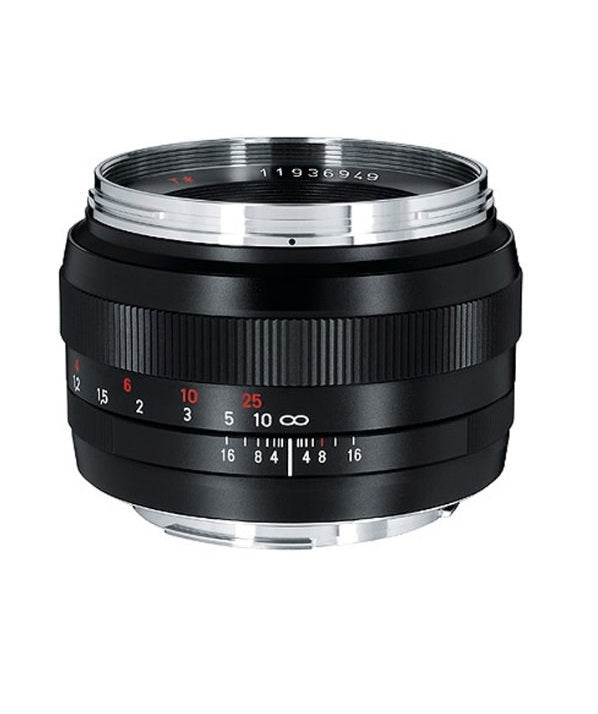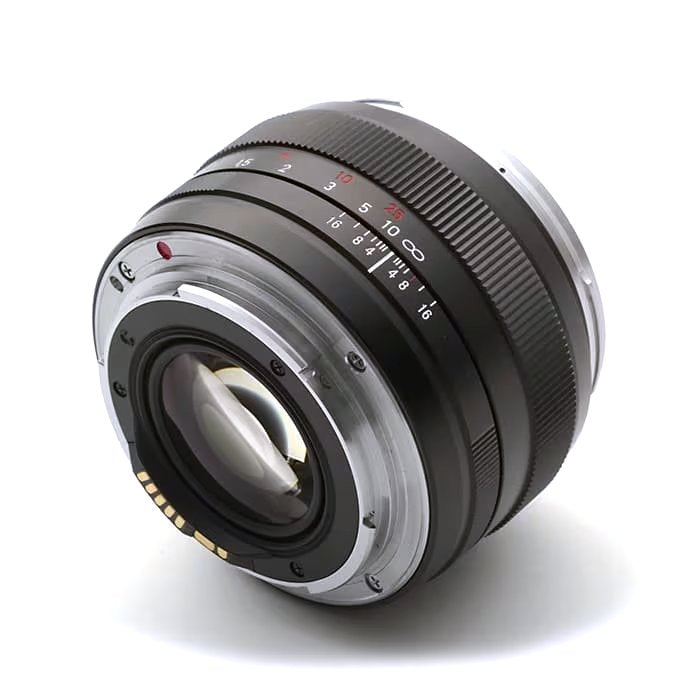Product Description
Zeiss Planar 50mm F1.4 ZE - Canon Fit Lens
The focal length of the Planar T* 1,4/50 is equal to the perspective of the human eye. Its fast aperture and exceptional compactness are its outstanding features. This lens produces a pleasing portrait style quality at the widest aperture and sharpens considerably beyond f/4 for any general-purpose application.
The famous symmetric lens design was invented by Dr Paul Rudolph at ZEISS in 1896. The Planar lens is the most successful camera lens design – and, by the way, the most plagiarised – ever created. It provides the lens designer with numerous means to correct aberrations extraordinarily well. Its performance is very constant over a wide range of imaging ratios, enabling such a versatile lens variety as the Makro-Planar lens.
ZEISS Classic lenses – a tradition of excellence
The ZEISS Classic lenses have enjoyed an outstanding reputation with photographers all over the world for many years now – and rightly so. The solid all-metal mount ensures constant functionality and image performance, regardless of the number of photographs taken. Manual focusing promotes creativity in the design of the image.

High-Speed Lens
Impressive photographs captured in low light always begin with a fast lens for a system or SLR camera. Because, a fast, high-performance lens captures as much light as possible. A lens with a large maximum aperture leads to the best results when shooting in an unfavourable light.
Ideal aperture with nine blades
Photographers want to guide the observer through the image. Minimal depth of focus is often used as a design element. This keeps the background intentionally blurred to keep the attention of the observer on the main subject. These different representations of the blurred areas, as well as the quality of the transition, are referred to as the Bokeh of a lens. The finely tuned features of the optical design on ZEISS SLR lenses ensure a particularly harmonious effect on the blurred areas of the image. The nine diaphragm blades and the resulting, virtually circular aperture on ZEISS SLR lenses are crucial to a favourable rendition of highlights in the fore and background.

Excellent image quality
The range of ZEISS T*® lenses offers the highest possible standards in terms of performance, reliability and, of course, image quality. Quite simply, they are superior in every way. You can count on highly advanced flare control for crisp and brilliant images, for example. And virtually zero geometric distortion, ensuring precise accuracy when reproducing shapes – especially useful when photographing products and architecture.

Elaborate stray light reduction
Rich, vibrant colours are vital to creating a lasting impression. Stray light in the lens, however, would lead to a brightening of the image, which is particularly visible in shadow areas. Image contrast is lowered; the image appears dull and bleached. We combine various, elaborate techniques to reduce unwanted stray light. For example, all lens elements are coated with the famous ZEISS T*® anti-reflective coating. Additionally, a jet black special paint is applied by hand to all lens element edges to ensure that reflections are prevented from the start.
High-quality all-metal mounts
Noticeable quality and high-value stability qualify ZEISS lenses for decades of intense use. The high-quality craftsmanship of the all-metal mounts, the easy-to-grip metal focus and aperture ring and the robust front bayonet and filter threads ensure an amazing photographic experience.
Payment & Security
Your payment information is processed securely. We do not store credit card details nor have access to your credit card information.
























